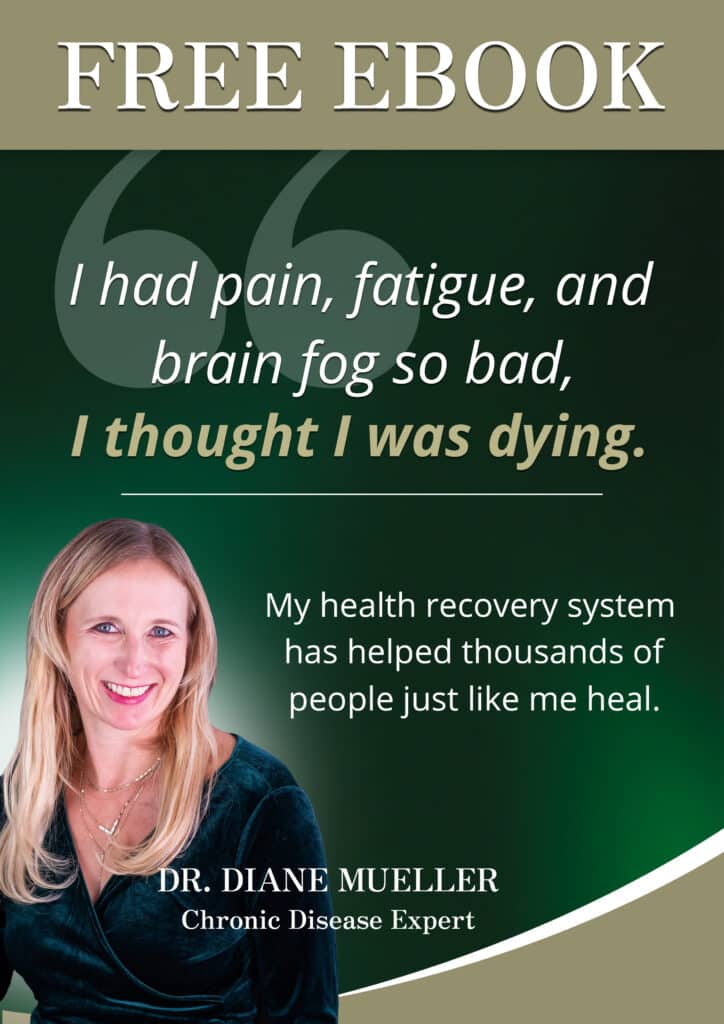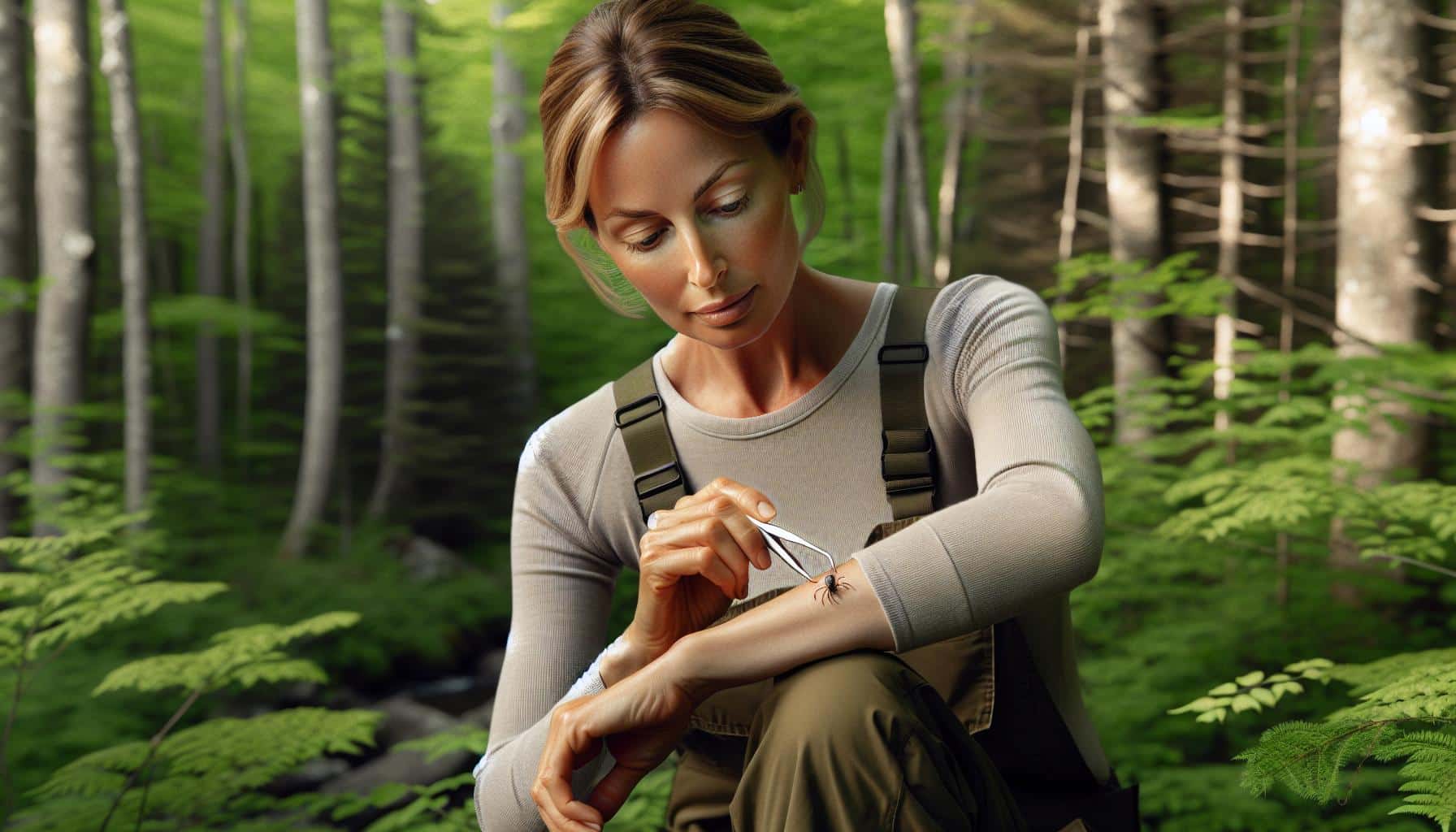
Written by Dr. Diane Mueller
Lyme disease, spread by ticks and caused by Borrelia bacteria can have nasty symptoms. You might start off with flu-like symptoms and that classic bullseye rash, but if it sticks around, it can lead to joint pain and even mess with your nerves. Dealing with Lyme usually means a mix of antibiotics and other treatments, depending on how far along you are and how you respond.
Also, mold exposure can mess with your immune system, making it tougher to beat Lyme disease. Knowing how mold and Lyme are connected is key for an effective treatment plan. This article explores different treatment options, tackling both Lyme disease and possible mold-related immune issues to help you get back on track.

Key Takeaways
Diagnosing Lyme disease involves a comprehensive evaluation of various factors to accurately identify the bacterial infection caused by Borrelia burgdorferi. Several steps are critical in this process:
Medical History and Symptoms: Symptoms such as the erythema migrans rash, fever, headache, and joint pain provide valuable clues. If you have been in areas where Lyme disease is endemic, this increases the likelihood of diagnosis.
Exposure to Ticks: An essential step involves considering your exposure to ticks. If you have recently encountered tick bites or have been in tick-infested areas, it significantly raises the suspicion of Lyme disease. Tick bites commonly lead to early localized disease, characterized by initial signs and symptoms around the bite area.
Blood Tests: Initially, an Enzyme-Linked Immunosorbent Assay (ELISA) test detects antibodies against Borrelia bacteria. If this test is positive or equivocal, a Western Blot test confirms the findings. These tests may yield false-negative results in the initial weeks of infection, as the body’s immune response might not have produced detectable antibodies yet.
Figuring out Lyme disease can be tricky because it comes with all sorts of symptoms. Once it spreads beyond the tick bite, things get even more complicated. So, the best way to nail down a diagnosis is by looking at a mix of factors—like your medical history, where you might’ve been exposed, lab tests, and physical signs.
Treating Lyme disease effectively hinges on early diagnosis and rapid intervention. Early stages respond well to antibiotics, which minimize complications if started promptly.
For early localized disease, oral antibiotics such as doxycycline, amoxicillin, and cefuroxime axetil are typically taken for 10-14 days. Doxycycline is preferred for adults and children over eight, while amoxicillin and cefuroxime are better for younger kids and pregnant women. These medications effectively treat Borrelia burgdorferi, the bacteria causing Lyme disease, and help patients recover quickly, avoiding severe complications.
In cases of severe symptoms, particularly with neurologic involvement, intravenous (IV) antibiotics like ceftriaxone may be required. These treatments, administered directly into a vein, typically last 28 days and are more effective against serious conditions such as meningitis or encephalitis compared to oral medications. This method demands a longer and more intensive treatment period but is crucial for treating advanced bacterial infections.
Side effects from antibiotics can range from mild to severe, but managing them ensures the treatment remains effective. Common issues like nausea or diarrhea can be mitigated by taking probiotics.
Those allergic to antibiotics like penicillin need alternatives to avoid reactions. Staying hydrated, maintaining a balanced diet, and consulting your doctor about adverse symptoms enhance the treatment experience. Managing side effects contributes to the success of Lyme disease treatment, allowing you to combat the infection without unnecessary discomfort or complications.
Have Lyme Disease or suspect you do?
Post-Treatment Lyme Disease Syndrome (PTLDS) affects a subset of people after antibiotic treatment for Lyme disease. If you’re experiencing persistent symptoms, it’s important to understand the nature of PTLDS.
PTLDS is marked by lingering symptoms like fatigue, body aches, and cognitive difficulties. These symptoms can mimic those of the initial Borrelia burgdorferi bacterial infection but don’t respond to further antibiotic therapy. Individuals often report significant impacts on daily activities and quality of life. Imagine facing constant tiredness, aching muscles, or a foggy mind—these are the realities for those dealing with PTLDS.
About 5-10% of people treated for Lyme disease develop PTLDS. The exact cause remains unclear, but it often follows other infections, including COVID-19. Experts suggest that an underlying autoimmune condition could develop post-treatment, driving these persistent issues. If you’ve undergone antibiotic treatment for Lyme, you may still face the risk of PTLDS.
Since additional antibiotics aren’t effective, PTLDS management focuses on symptom relief. Techniques include physical therapy for body aches, cognitive therapy for mental clarity, and medications to manage pain. Studies indicate that long-term antibiotic use doesn’t improve the health-related quality of life for PTLDS patients, emphasizing the need for alternative symptom management strategies.
The My Lyme Doc Method, developed by Dr. Diane Mueller, offers a comprehensive approach to treating Lyme disease. This method encompasses four main components designed to alleviate symptoms and promote overall health: Metabolic Support, Lifestyle Changes, Detoxification, and Microbe Balancing.
Metabolic support focuses on providing the body with essential nutrients and supplements. This approach helps combat Lyme disease and mold-related illnesses, which can often exacerbate the symptoms of Borrelia burgdorferi infections. Vital elements include vitamins, minerals, antioxidants, and proper hormone balance. Ensuring optimal levels of thyroid, adrenal, and sex hormones is essential. Also, maintaining mitochondrial health enhances the body’s energy production, which can be compromised during bacterial infections.
Making important lifestyle changes supports your body’s fight against Lyme and mold. Stress management, sleep optimization, and avoidance of environmental toxins, including sugar, are key focus areas. By reducing stress and improving sleep quality, you can bolster your immune system’s ability to counteract early localized disease and early disseminated disease stages. Besides, working on your mindset and emotional health fosters a holistic approach to healing.
Detoxification is fundamental in removing Lyme and mold from your body. This process can cleanse the liver, colon, and lymphatic system, facilitating the elimination of toxins. Supporting your body’s natural refresh pathways ensures that remnants of Borrelia bacteria and other harmful agents are effectively expelled. A cleaner internal environment enables your immune system to function more efficiently, enhancing your overall recovery process.
Microbe balancing is essential in maintaining a healthy microbiome. Ensuring the growth of beneficial microorganisms and eliminating pathogenic ones can prevent dysfunction. Promoting a balanced microflora creates an internal environment that discourages bacterial infections, including those caused by Borrelia burgdorferi. This balance supports overall health and strengthens your body’s resilience against diseases.
The My Lyme Doc Method integrates these four critical components, creating a multi-faceted approach to managing and treating Lyme disease. By focusing on metabolic support, lifestyle changes, detoxification, and microbe balancing, this method aims to provide comprehensive care tailored to address both Lyme and mold-related challenges.
Co-infections with Lyme disease complicate both diagnosis and treatment. Ticks can carry and transmit multiple pathogens simultaneously, causing a range of symptoms that often overlap or intensify due to the presence of more than one infection.
Approximately 10-15% of Lyme disease patients experience co-infections with additional pathogens such as babesiosis, anaplasmosis, and tick-borne encephalitis virus. These co-infections complicate diagnosis and treatment, as their symptoms can mimic or intensify those of Lyme disease, requiring different medical approaches. Accurate identification and a comprehensive medical evaluation are crucial for effective treatment and recovery.
Preventing Lyme disease is all about keeping those ticks away and to avoid Borrelia burgdorferi. Some top tips include pulling off ticks quickly and properly with fine-tipped tweezers, using tick repellents like permethrin-treated clothes and EPA-approved insect repellents with DEET or picaridin, and wearing long sleeves and pants. Don’t forget to do regular tick checks, especially after being outside. Put all these strategies together, and you’ll be much less likely to get Lyme disease.
You can find links below to some specifics on antibiotics, natural treatments as well as other treatment topics. In this article we will be discussing some big picture treatment strategies that we feel are important no matter which treatment strategy you choose. You can click on any of the links below for more specific information on those topics.
Addressing Lyme disease requires a multifaceted approach that considers both treatment and prevention. By understanding the complexities of the disease and adopting comprehensive strategies like the My Lyme Doc Method – by booking a call with us, you can improve your quality of life. Remember to stay vigilant about tick prevention through proper techniques and protective measures. Combining these efforts ensures you’re well-equipped to combat Lyme disease effectively.
[1]
Rudenko, N., Golovchenko, M., Kybicova, K. et al. Metamorphoses of Lyme
disease spirochetes: phenomenon of Borrelia persisters. Parasites
Vectors 12, 237 (2019). https://doi.org/10.1186/s13071-019-3495-7
Free Lyme/Mold Webinar: "Why Am I Still Sick?"
Have Lyme Disease or suspect that you do?
We have helped thousands of
people restore their health
and quality of life by diagnosing
and treating their Lyme Disease.
“Dr. Mueller’s approach to medicine is refreshing! There is only so much you can do with western medicine and in my life I was needing a new approach. By addressing the whole body, nutritional diet factors, environmental factors, blood work, and incorporating ideas I had not previously known, I was able to break through with my conditions. I am not only experiencing less pain in my life, but through the process of healing guided by Dr. Diane Mueller, I am now happy to say I have more consciousness surrounding how I eat, what to eat and when things are appropriate. Living by example Dr. Mueller has a vibrancy that makes you want to learn and know more about your body and overall health. I highly recommend her to anyone looking for new answers, a new approach to health, or in need of freedom from pain and limitations.”
-Storie S.
Kihei, HI
Lyme Disease is Often Misdiagnosed as Fibromyalgia, Chronic Fatigue, Depression,
or Other Illnesses
Have Lyme Disease or suspect you do?
